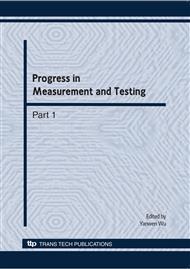p.979
p.985
p.993
p.997
p.1003
p.1009
p.1015
p.1021
p.1027
Building Cooling Load Forecasting Based on Support Vector Machines with Simulated Annealing
Abstract:
Accurate forecasting of building cooling load has been one of the most important issues in the electricity industry. Recently, along with energy-saving optimal control, accurate forecast of electricity load has received increasing attention. Because of the general nonlinear mapping capabilities of forecasting, artificial neural networks have played a crucial role in forecasting electricity load. Support vector machines (SVMs) have been successfully employed to solve nonlinear regression and time series problems. In order to improve time efficiency of prediction, a new hourly cooling load prediction model and method based on Support Vector Machine in this paper. Moreover, simulated annealing (SA) algorithms were employed to choose the parameters of a SVM model. Subsequently, examples of cooling load data from Guangzhou were used to illustrate the proposed SVM-SA model. A comparison of the performance between SVM optimized by Particle Swarm Optimization (SVM-PSO) and SVM-SA is carried out. Experiments results demonstrate that SVM-SA can achieve better accuracy and generalization than the SVM-PSO. Consequently, the SVM-SA model provides a promising alternative for forecasting building load.
Info:
Periodical:
Pages:
1003-1008
Citation:
Online since:
May 2010
Authors:
Price:
Сopyright:
© 2010 Trans Tech Publications Ltd. All Rights Reserved
Share:
Citation:


